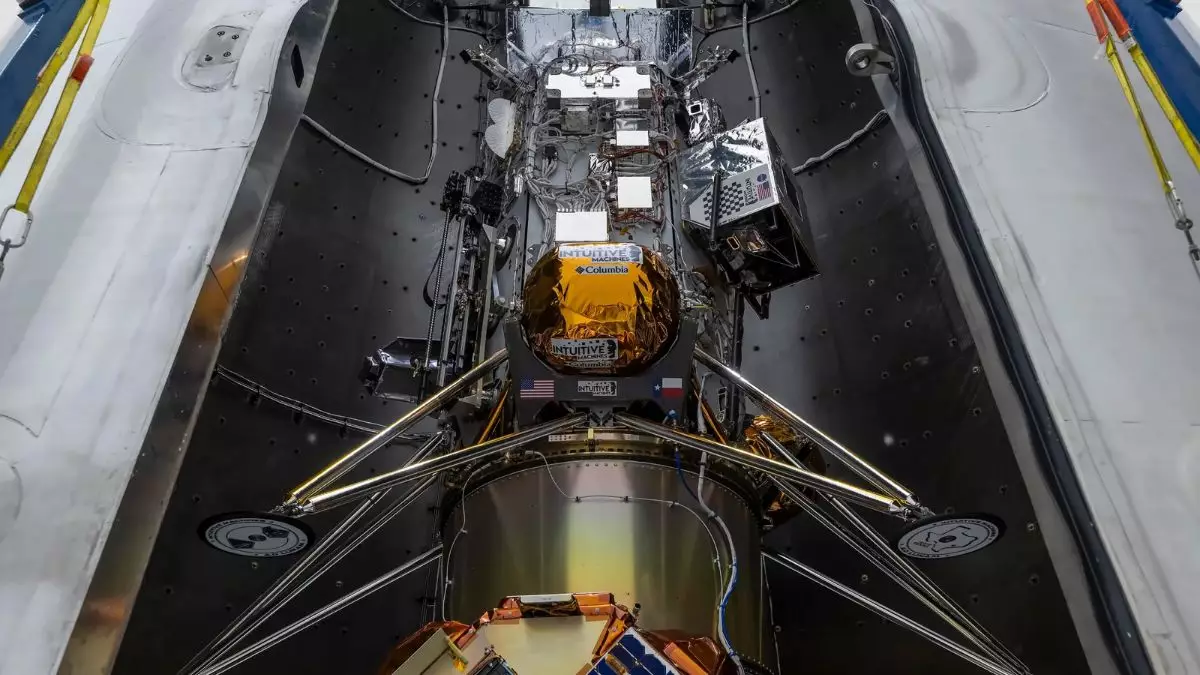NASA’s relentless pursuit of expanding humanity’s presence beyond Earth has reached an exciting milestone with the impending launch of Intuitive Machines’ second lunar delivery mission, known as IM-2. Scheduled for liftoff from Kennedy Space Center on 26 February, this endeavor marks a significant leap in both technological and exploratory capabilities. Set against the backdrop of the Artemis programme, this mission isn’t just about planting flags; it’s about laying the groundwork for a sustainable human habitation on the Moon. However, one must critically examine if these lofty ambitions can live up to the promises being made.
The IM-2 mission will showcase an impressive array of advanced technologies, the likes of which may redefine our understanding of lunar resources. At the heart of this mission lies a suite of scientific instruments, including a drill and mass spectrometer. These tools will be instrumental in probing beneath the lunar surface for water ice—a crucial resource for future human activity. It’s a commendable endeavor, yet one can’t help but question whether the potential gains justify the risks involved. Are we truly prepared for the complexities that come with lunar excavation?
Adding to the excitement, Intuitive Machines will deploy a drone named Grace to conduct high-resolution surveys of the harsh lunar terrain. This technology could pave the way for improved navigation in previously inaccessible regions. But an underlying concern emerges: will we inevitably compromise safety and sustainability in our quest for scientific advancement? After all, the Moon is not an empty canvas, and our relentless exploration could lead to longer-term ecological implications.
One of the mission’s notable technological demonstrations is a cellular network system developed by Nokia Bell Labs, which aims to establish a lunar connectivity platform. This innovation holds promise not just for operational discussions between the lander and rovers, but also for future crewed missions. The idea of a lunar cellular network seems thrilling and futuristic; however, it raises several questions about our readiness. Will we be able to protect this network from potential cyber threats? As more entities participate in lunar exploration, we must grapple with the implications of interconnectivity—and the vulnerabilities that accompany it.
NASA’s collaboration with multiple U.S. companies through initiatives like CLPS and Tipping Point is a significant step toward a more inclusive approach to space exploration. Yet this collective effort is a double-edged sword. While pooling resources brings innovation and speed to development, it also risks diluting accountability. As we embed private entities into lunar exploration, how do we ensure that profit motives do not overshadow the mission’s core objective—advancing human knowledge and capability?
These initiatives hold vast potential to revolutionize our approach to space. Still, they serve as a reminder of the delicate balancing act we must maintain between exploration, commercial interests, and ethical responsibilities. As we stand on the brink of this new lunar chapter, the stakes are higher than ever.


Leave a Reply